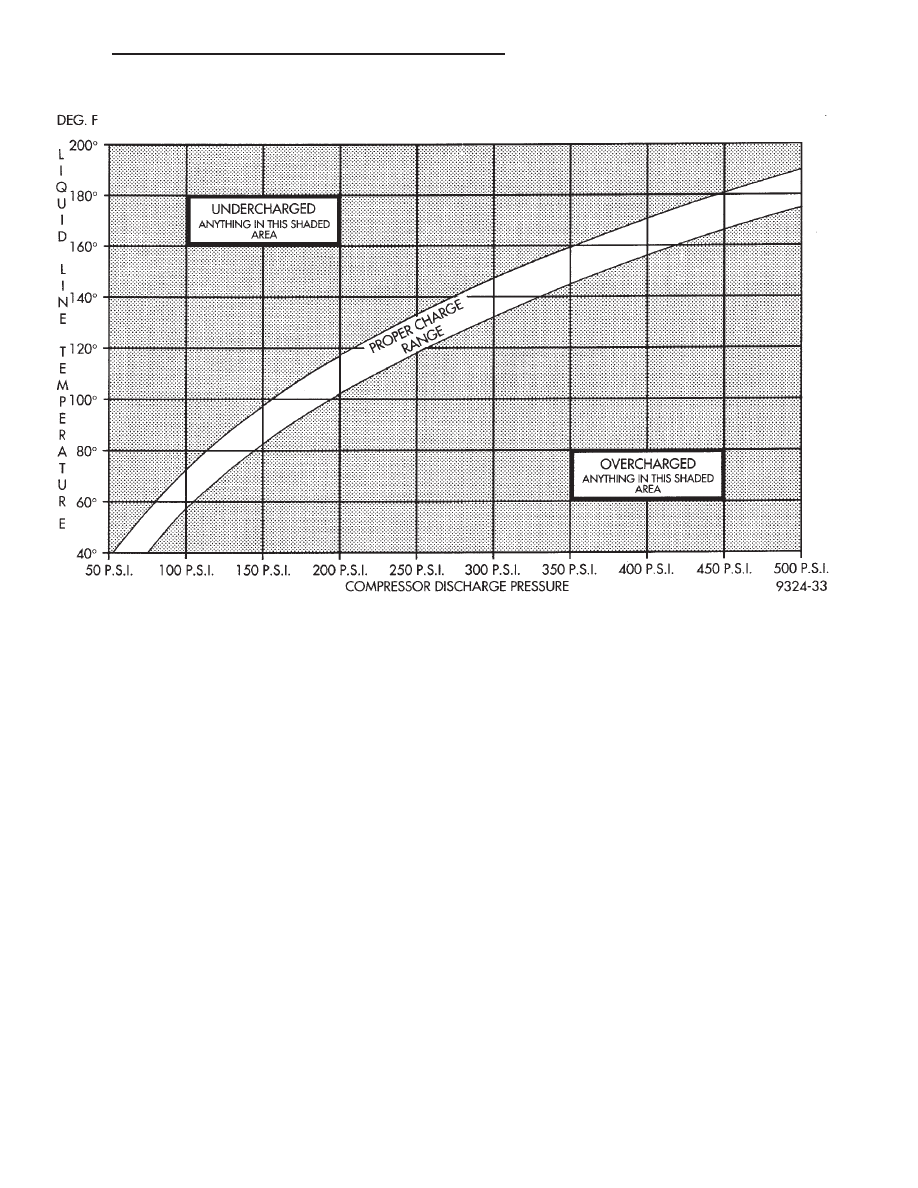Chrysler New Yorker. Manual - part 334

Charge Level-Check or Fill. If while performing this
test A/C liquid line pressure is less than 207 kPa (30
psi) proceed to Empty Refrigerant System Leak Test.
If liquid line pressure is greater than 207 kPa (30
psi) proceed to low refrigerant level leak test. If the
refrigerant system is empty or low in refrigerant
charge, a leak at any line fitting or component seal is
likely. A review of the fittings, lines and components
for oily residue is an indication of the leak location.
To detect a leak in the refrigerant system, perform
one of the following procedures as indicated by the
symptoms.
EMPTY REFRIGERANT SYSTEM LEAK TEST
(1) Evacuate the refrigerant system (minimum
evacuation time of 15 min.) to the lowest degree of
vacuum possible (approx. 28 in Hg.). Determine if the
system holds a vacuum for at least 15 minutes after
pump is off. If vacuum is held, a leak is probably not
present. If system will not maintain vacuum level,
proceed with this procedure.
(2) Prepare a .284 Kg. (10 oz.) refrigerant charge
to be injected into the system.
(3) Connect and dispense .284 Kg. (10 oz.) of
refrigerant into the evacuated refrigerant system.
(4) Proceed to Step 3 of Low Refrigerant Level
Leak Test.
LOW REFRIGERANT LEVEL LEAK TEST
(1) Determine if there is any (R-134a) refrigerant
in the system. Use the scan tool (DRB) partial charge
test or pressure gauge liquid line temperature partial
charge check. See system charge level check or fill for
procedure.
(2) Position the vehicle in a wind free work area.
This will aid in detecting small leaks.
(3) Bring the refrigerant system up to operating
temperature and pressure. This is done by allowing
the engine to run for five minutes with the system
set to the following:
• Transaxle in Park
• Engine Idling
• A/C Controls Set in 100 percent outside air
• Blower switch in the high A/C position
• A/C in the ON position
• Open all windows
CAUTION: A leak detector designed for R-12 refrig-
erant may not detect leaks in a R-134a refrigerant
system. Check specifications on leak detector.
Fig. 12 Charge Determination Graph
300M
HEATING AND AIR CONDITIONING
24 - 15
SERVICE PROCEDURES (Continued)